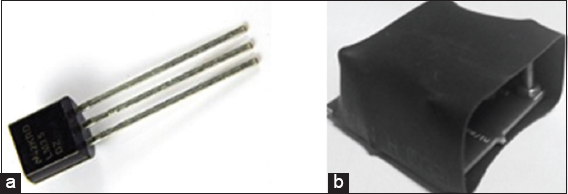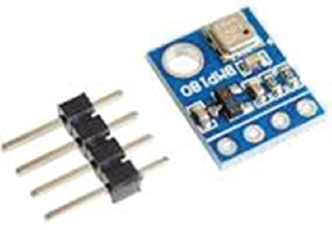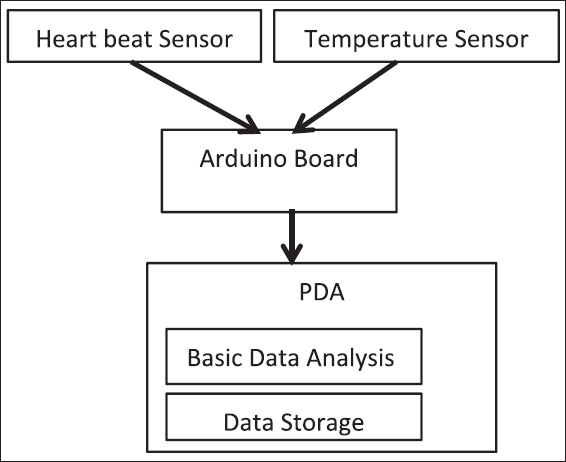INTRODUCTION
The purpose of the paper provides remote monitoring to make it possible for elderly people to stay in their homes rather than move to an assisted-living facility or nursing home. Internet of things (IoT) is the internetworking of physical devices, vehicles, buildings, and other embedded devices with electronics, software, sensors, actuators, and network connectivity which enable these objects to collect and exchange data. It consists of all the web-enabled devices that collect, sends and acts on data they acquire from their surrounding environments using embedded sensors and processors. These new technologies allow us to monitor the patients on a regular basis, replacing the needs of hospitalization and frequent visit of the doctors or nurse for regular checkups. This embedded systems with sensors gain information accessible to anyone, anytime, and anywhere.
People who have suffered from chronic diseases such as heart disease, cancer, diabetes, stroke, and arthritis are monitored by basic functions continuously. It includes the measurement of temperature, pulse rate, respiration rate, and blood pressure. The proposed smart health monitoring system is hybrid technology. It is the combination of IoT, mobile application, and cloud computing. It uses sensors to monitoring and updates patient’s current status in real time.
A cloud database stores the data such as heart rate and temperature received from sensors, and after a time period, this method can determine an idle data of the monitoring body. This idle rate is compared with every new sensor capture data and can determine the normal and abnormal inconsistency. In this paper, a support vector machine (SVM) algorithm is used for the data are analyzed, and the patient’s condition is critical the guardians/caretaker will be informed about the situation, and a message regarding the patient’s condition will be sent to the concerned doctor along with the patient details. The systems provide a bridge caretaker and patient when they are unable to serve them in person.
The outline of the paper is as follows: A literature survey in section 2, architecture of the system in section 3, Discussion in section 4, and Conclusion and Future Scope in section 5.
RELATED WORK
Farin et al.[1] developed an intelligent sensor-based system to monitor the heart rate using heartbeat sensor. The heart rate received from the heartbeat sensor is stored in the database, and after a time interval, it determines the idle heart rate of the monitoring human body. This idle heart rate is compared with the threshold values of stored data and determines the variability of heart function. On abnormal conditions, the warning message is sent to the authorized person.
Shao[2] proposed prototype for collecting health data through mobile phones and visualizes the collected data in a web application and conducted a qualitative study to assess challenges in remote health data collection. He used dataset al.eady available in the hospitals and provides the statistics of patient’s health data. This paper motivates the research to bridge the gap on data available and collection through mobile technology.
Son et al.[3] identified predictors of medication in heart patients. They also applied SVM machine-learning algorithm for data classification.
Cortes et al.[4] developed a classification or prediction method called support-vector. This machine conceptually implements the following idea: Input vectors are non-linearly mapped to a very high dimensional feature space. The SVN can overcome the problem that arises when there is a large number of input and the number of observations.
Qureshi et al.[5] presented design and implementation of Mobile Intelligent Remote Healthcare Monitoring System and discussed issues in handled in Bluetooth technology.
Abdullah et al.[6] presented a mobile device based wireless healthcare monitoring system that can provide real-time online information about physiological conditions of a patient. The proposed system was designed to measure and monitor important physiological data of a patient to accurately describe the status of her/his health and fitness. The patient’s temperature, heartbeat rate, muscles, blood pressure, blood glucose level, and electrocardiogram data are monitored, displayed, and stored by the system.
Janardhanan et al.[7] analyzed the performance of the Naïve Bayes classifier, RBF network, and SVM classifier. The datasets were of a binary class, and each dataset had a different number of attributes. The datasets include heart datasets, cancer, and diabetes datasets. It concluded that SVM classifier produces better accuracy in classification.
SYSTEM ARCHITECTURE
This section expands the components and working principles of the proposed system. It is classified into four levels shows in Figure 1.
Figure 1: System architecture
Level 1 – IoT Box
In this first level, wearable sensors attached to the patient to monitor the health status using vital signs. The IOT box consists of basic components.
Sensor: It is a sensing physiological data from the patient’s body.
Temperature sensor used to measure the amount of heat energy that allows detecting changes in temperature of the patient and converting the data to store in the system.
Heartbeat sensor used to measure the heart rate by the amount of the blood in the finger changes with respect to time [Figure 2].
Figure 2: (a) Temperature sensor. (b) Heartbeat sensor
Blood pressure sensor
Blood pressure sensor is used to measure the blood pressure in the human body.
IoT microcontroller
It is used to control the component in sensors and collect data from sensors and transfer to the local system.
Level 2 – Personal Digital Assistant with Internet Connection
It acts as an interface between Level 1 and Level 3. It collects data from IoT box, processing the data and identify any immediate critical condition such as temperature increasing abnormally and transfers data to the cloud server. If an abnormal situation in sensor data then it creates an emergency message and sends to patient’s caretaker and doctor[8-10] [Figure 3].
Figure 3: Connection of internet of things box and PDA
Level 3 – Data Analysis
This level data capture from Level 2 will be stored in the cloud and simultaneously these data analyzed by Weka tool. It is a popular tool for machine learning implementation with the free software license. This work proposed SVM for data analysis. SVM classifies cases by finding a separating boundary. It works better when there are a large number of input variables relative to the number of recorded observation.
Level 4 – Message Bot
A proposed message bot is monitored and observed the result of SVM regularly. If it identifies any critical situation, then it sends an alert message to patient’s doctor and caretaker. Furthermore, it sends message or voice call to the hospital which is recorded in patient profile.
RESULTS AND DISCUSSION
The proposed system collected real-time physiological parameters such as temperature, heart rate, and blood pressure from the sensors attached to the patient. The patient trained dataset stored in the cloud. When the database updated with new data of the temperature, heart rate, a SVM learning algorithm check the data goes either below or above the threshold if so then an emergency message will be sent to patient’s caretaker, doctor, and nearest hospital. Thus, the caretaker is alerted even way from the patient. The evaluation with the existing system in case of emergency the alert is given when the caretaker is near the patient. In this proposed system, the alert is given to the caretaker wherever they are. It is efficient in terms of alerting the caretaker compared to the existing system. From the evaluation and the result obtained from the analysis, the system is better for patients and the doctor to improve their patients’ medical evaluation.
CONCLUSION AND FUTURE SCOPE
Patients’ health status can be monitored in real time by caretakers and doctors using various sensors even when the patient is residing at home. Furthermore, patients can peacefully leave the hospital as they are monitored by health professionals even if they are outside the hospital. Thus, the proposed system helps individuals as well as the whole society. It can help the patient by nursing his or her health and send alerts to take required actions against any upcoming health alarming conditions. The system can be extended by adding more features to the mobile application such as linking the ambulance services, leading doctor’s list and their specialized areas, hospitals, and their special facilities. Doctors can create awareness about diseases and their symptoms through the mobile application.



